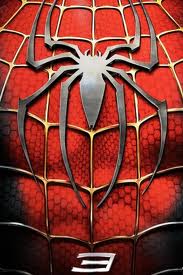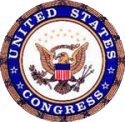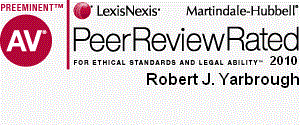Newsletter Issue 32 - October 2011
In this issue:
High cost of character costumes
Deceptive trademarks
America Invents Act, Part II - Prior Art
But Mom, Why is the Spider-Man Costume So Expensive?
As the days grow shorter, it seems that the shorter people (we call them "kids") start to want costumes and large bags the size of small dump trucks into which kindly neighbors intent on supporting the local dental association will deposit "treats." You may have noticed that some costumes (for example, independent small-business marine entrepreneurs, native American leaders, Wiccans, and the like - political correctness is very important to us attorneys) are relatively inexpensive, while others such as Spider-Man®, Batman®, Superman®, any Teenage Mutant Ninja Turtle®, Super Mario®, and Mickey Mouse® to name but a few, cost amounts that would bankrupt some small African nations. Why, you may wonder, is there this price disparity? (Or, if you're like most in suburbia, you just pay it and hope that for a brief and shining moment, the tykes will be happy and quiet in the back of the SUV.)
Most of the price difference between generic costumes and the fancy recognizable characters may be attributed to what intellectual property lawyers (you didn't think that this was just an article about Halloween, did you?) call "BRAND VALUE". In other words, the companies that own the copyrights and trademarks in everything from Scooby Doo® to Sponge Bob Squarepants® (and no, that is NOT a cute nickname for our law partner, Bob Yarbrough...) charge licensing fees to the costume manufacturers for the privilege of using their famous characters' appearances. After all, these corporations have spent a great deal of time, money and effort getting your kids to instantly recognize and imitate the characters (just ask a six year old what Squidward™ says, or which TransFormer® is the best.)
As a practical matter, if you make your own costumes, you don't have to worry about paying royalties to the owners of the intellectual property. Beware, however, of posting that cute video showing your adorable home-made Buzz Lightyear® costume on YouTube...the trademark police may just get annoyed. Got an equally obtuse concern about intellectual property? Give the attorneys at LWH a shout (but try not to use a catch-phrase of a famous cartoon character...those are registered too.)
Trademark Deception and Misdescription

Did you know that a trademark may be refused registration because it is deceptive? Yes, indeed, the "deceptively misdescriptive" doctrine is an interesting -- if not tongue twisting -- principle of trademark law, which occasionally rears its head. Here's how it works in a real life case. Retail Brand Alliance, Inc. (i.e., Brooks Brothers) sought to register the trademark BLACK FLEECE for apparel such as belts, blouses, boots, including vests and -- this is important -- "not made of fleece fabric." The trademark examiner refused registration of mark under section 2(e)(1) of the Trademark Act on grounds that the applicant's mark is deceptively misdescriptive of its goods. Brooks Brothers appealed the decision to the Trademark Trial and Appeal Board (TTAB).
On appeal, Brooks Brothers acknowledged that because its description included goods "not made of fleece fabric" that the term "black fleece" is facially misdescriptive of apparel that is not made of black fleece. Nonetheless, Brook Brothers argued that consumers are not likely to believe the facial misrepresentation. At this point, you might be saying to yourself what the heck is going on? The gist of the Brook's Brother's position was that the term "black fleece" was so well known among its customers that they understand that the term does not necessarily refer to clothing made of black fleece. This is referred to as "secondary meaning," a subject we have written about several times in this newsletter.
The TTAB did not buy the argument. Here is its analysis. A trademark may be merely descriptive of goods or services if it conveys an immediate idea of an ingredient, quality, characteristic, feature, function, purpose or use of the goods or services. Whether the term is merely descriptive is determined not in the abstract, but in relation to the goods or services at issue, the context in which mark is being used, and the possible significance of the term to the average purchaser of the goods or services. According to the TTAB, it is well-settled that "the question is not whether someone presented with only the mark could guess what the goods or services are. Rather, the question is whether someone who knows what the goods or services are will understand the mark to convey information about them." So, if a mark conveys an idea or information that is false, even if plausible, then it is "deceptively misdescriptive and unregisterable under trademark law."
The TTAB applied a two-part test to determine deceptive misdescription: First, it asked does the mark misdescribe goods or services to which it applies? And, second, if so, would consumers likely believe this description? The TTAB held that "BLACK FLEECE clearly describes a type of clothing, and applicant's identification of goods states that its clothing is not of that type" thus satisfying part one of the test. As to part two of the test, the TTAB held that Brooks Brother's clothing is available not only to discerning customers who may understand the brand, as Brook Brothers argued, but to everyone else, including people buying from catalogues and online sources who could not examine the goods.
Keep in mind that had Brooks Brothers proven that its deceptively misdescriptive mark had acquired secondary meaning, it could have overcome the objections of the TTAB. The evidence on this score, however, was weak. The lesson here is that choosing an appropriate trademark requires more than just picking the "cool" or fashionable sounding term, it also requires an understanding of the technicalities of trademark law.
America Invents Act, Part 2: 'Prior Art'
This is the second of our newsletters to discuss the 'America Invents Act,' which was signed into law on September 16, 2011. The Act moves the US patent system away from 'first to invent' and to 'first to file.' So what does 'first to file' mean for an inventor or invention-owning business?
The most important practical difference is in the 'prior art' that will be cited against your patent or application by the patent examiner or by a court. The changes to section 102 of the patent law discussed below will apply to any patent application filed on or after March 17, 2013.
What is 'prior art?' An invention must be both 'novel' and 'unobvious' to qualify for a patent. To determine whether an invention is novel and unobvious, the PTO and the courts will compare the invention to the prior art. The term 'prior art' generally refers to things that people have created and that become available to the public, such as patents, published patent applications, treatises, articles, advertisements, web sites, designs, products and the like. For most inventions, the term 'prior art' means issued patents and published patent applications.
About one half million patent applications are filed in the U.S. every year, not to mention all the patent filings in other countries around the world. That's an additional one half million patent applications EACH YEAR that can be 'prior art' and potentially may render your invention not 'novel' or 'obvious.'
Bottom Line: Under pre-March 17, 2013 law, the date that prior art is effective is determined by the date that you invented your invention ('first to invent'). After March 17, 2013, the date that prior art is effective is determined by the date that you filed your patent application ('first to file'). Since you invented your invention before you filed your patent application, there will be more prior art to cite against your application after March 13, 2013 than before that date. In general and all other things being equal, you will have a better chance of getting and keeping a patent if you file your application before March 17, 2013.
That's the short form. If you are eager for more, read on.
Nuts and Bolts: For patent applications filed on or after March 17, 2013, the following are 'prior art:'
1. Publications (including issued patents and published applications) are prior art if they were PUBLISHED before you filed your patent application. BUT, you are protected from the publication if the publication occurs within one year of your filing date AND the disclosure came from you (it's your application that is published), or someone took the information from you, or you publicly disclose the invention prior to the date of publication.
2. A United States patent application effectively FILED before your filing date becomes prior art when it is eventually published or issued as a patent. BUT, you are protected from the prior filing of the patent application if the disclosure is yours (your patent application) or the information was taken from you, or if the two patent applications are under common ownership or obligation to assign at the time that the second application is filed.
Examples: As in all things patent, it's complicated, so consider some examples:
1. You file a first patent application on March 17, 2013. You have a second invention that is a follow up to the first. What is the latest date that you can file a second patent application without your first patent application becoming prior art to the second application? Answer: Up to one year after the first application is either published or issued as a patent, whichever happens first. Publication generally will occur eighteen months after your first U.S. filing, so you have a total of up to two and one half years after filing application number 1 to file application number 2. Note that you are not protected from intervening applications or disclosures by other people.
2. You file a patent application on March 17, 2013. The examiner cites a technical treatise published on March 16, 2013. Is the treatise prior art to your application? Answer: Yes, it is. You will be able to overcome the treatise if you can show that the information came from you (you wrote the treatise) or was derived from you (someone wrote about your research) or that you publicly disclosed the invention less than one year before the filing date.
3. You file a patent application on March 17, 2013. The examiner cites a U.S. patent application filed by your competitor on March 16, 2013 and published after your filing date. Is the competitor's application prior art to your invention? Answer: Yes, unless you can show that the list of inventors is the same, or that the competitor derived the invention from you, or that you publicly disclosed the invention prior to your competitor's filing date, or that both applications are under common ownership at the time of the second filing date or were the subject of a joint research agreement.
4. You file a patent application on March 17, 2013. The examiner cites a European patent application filed March 16, 2013 and published long after your filing date, but that was never filed as a U.S. patent application. Is the European patent application prior art to your application? Answer: No, it is not. 'First to file' only applies to applications that are eventually filed in the U.S, even if the application started out life in another country.
5. You file a patent application on March 17, 2013. The examiner cites a European patent application that was published on March 16, 2013. Is the European application 'prior art' to your U.S. application? Answer: Yes, unless you can show that the information is yours (you filed the European application), or the information was taken from you, or that you publicly disclosed the information less than one year prior to your filing date.
Conclusion: Both before and after March 13, 2013, the sooner that you can file your patent application, the better. After March 13, 2013 other reasons to file as soon as possible go into effect, such as less prior art to cite against your invention and avoiding a patent bar.

